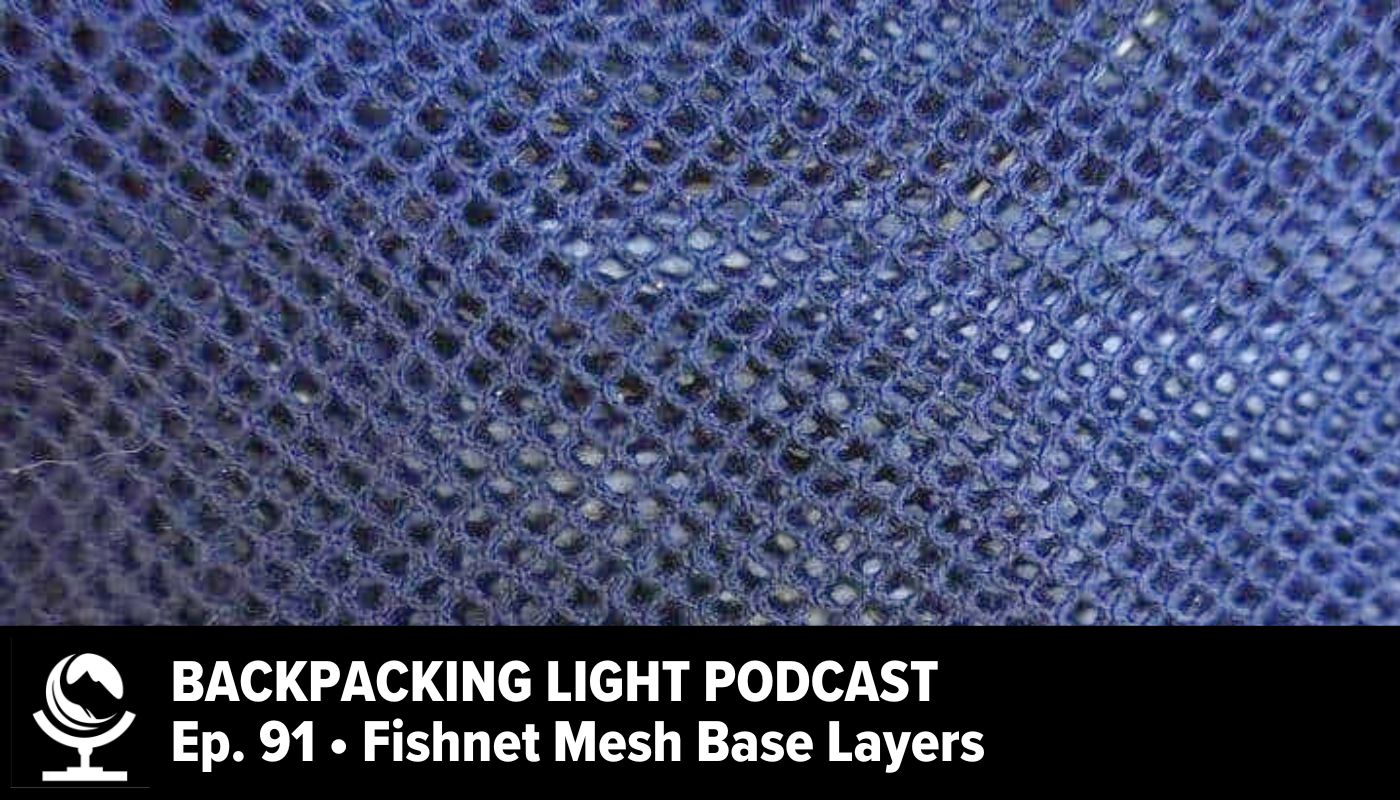Episode 91 | Fishnet Mesh Base Layers
Episode Sponsor

This episode of the Backpacking Light Podcast is sponsored by BRYNJE, manufacturer of premium fishnet (open mesh) base layer apparel made with Schoeller polycolon and merino wool. Backpacking Light podcast listeners can enjoy 10% off with the coupon code BPL10 at brynjeusa.com.
Listen
Summary
In today’s episode of the Backpacking Light podcast we’re going to talk about fishnet base layers and the Swedish ideal of lagom.

In this Episode:
What’s New at Backpacking Light?
- November 8th Newsletter – Lagom & Tenkara
- Essay by Jackie We on lagom and adventure travel
- Sign up for the Backpacking Light Email Newsletter.
- We’ve updated both the REI gear guide and the Publisher’s Gear Guide for the winter season!
- Become a Backpacking Light Member.
- Follow us elsewhere on the web: YouTube | Instagram | Facebook
Interview with Jeff Jacobs of Brynje USA
Our guest this week is Jeff Jacobs of Brynje USA. Jeff’s dad was an Olympic nordic ski racer at the Oslo Olympics 1952, and at the time became enamored with the Scandinavian idea that a mesh, or fishnet-style base layer, was the optimal fabric design for wearing next to your skin in cold conditions during high exertion activities. Mr. Jacobs started importing Norwegian fishnet base layers to the United States, and his son, Jeff, picked up the torch and expanded the market through Brynje’s USA division. Jeff joins me today where we talk about the fundamental design of Brynje fishnet, the role of fiber types, and how fishnet is incorporated into layering systems for both cold and warm weather hiking and backpacking.
Submit a Tip, Trick, or Question
Share your tips, tricks, and questions on the podcast – submit it via email to [email protected].
Featured Products
Links, Mentions, and Related Content
- Link: Clothing Systems for Outdoor Activities
- Gear: Brynje Thermo Mesh Shirt Review
- Gear Testing / Wilderness Skills: Just Say No To Wicking: Non-Traditional Base Layers Based on a Next-to-Skin Fishnet Model
About the Backpacking Light Podcast
Subscribe
- Apple Podcasts | Spotify | Google Play | Stitcher | RSS
More Episodes
Feedback, Questions, Tips?
- Submit them via email or Twitter and get featured on our next podcast!
Credits
- Backpacking Light - Executive Producer
- Ryan Jordan - Director and Host
- Chase Jordan - Producer
- Look for Me in the Mountains - Music
- Written by: Chris Cunningham and Ryan Jordan
- Performed by: Chris Cunningham (acoustic guitar, lead and harmony vocals, harmonica), Chad Langford (upright bass), and Tom Murphy (mandolin).
- Produced by: Basecamp Studios in Bozeman, Montana
Sponsors
- This episode of the Backpacking Light Podcast is supported and kept advertising-free by Backpacking Light membership fees. Please consider becoming a member which helps support projects like this podcast, in addition to a whole slew of other benefits!
Contact
You can contact us at [email protected], or follow us on social media -
- Backpacking Light - Facebook | Instagram | Twitter
- Ryan Jordan - Instagram | Twitter | WWW
- Chase Jordan - WWW
Disclosure
- Some links on this page may be “affiliate” links. If you click on one of these links and visit one of our affiliate partners (usually a retailer site), and subsequently place an order with that retailer, we receive a small commission. These commissions help us provide authors with honoraria, fund our editorial projects, podcasts, instructional webinars, and more, and we appreciate it a lot! Thank you for supporting Backpacking Light!



Home › Forums › Episode 91 | Fishnet Mesh Base Layers